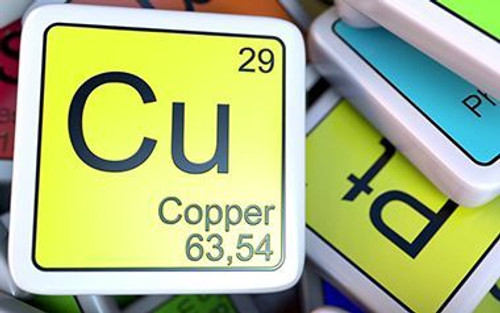Zinc is a compound consisting of many metals such as brass, bronze, silver, and other types of alloys. The usage of Zinc varies to being a protective coating on certain metals such as galvanized steel for the purposes of preventing corrosion. The salts within Zinc are utilized in antibiotics, pesticides, wood, manufacturing of glasses, glues, cements, rubber and as a waterproofing instruments for textiles, paper, wool, concrete, rocks.
[custom-specifications]
Health Effects
Zinc is important metal with harmful aspects that lead to health problems for humans who are exposed to it. Zinc is nontoxic to people, except at elevated levels or in certain salts in which other compounds are the primary toxic agents. Despite these unwanted effects, Zinc in low amounts is generally poses no health risks.
[/custom-specifications]
[custom-features]
Ion Exchange
Ion exchange systems are best used for the removal of Zinc from water. Water softening, which is one type of Ion exchange, is capable of removing nearly 100% of ZInc from water. In the Ion exchange softening process, the ions removed are substituted for sodium ions from the resin. These discarded ions are flushed from the resin with a brine solution. Restoration of the resin with brine is necessitated once the resin is congested and ultimately is no longer effective. For efficient elimination of zinc, the resin must be rejuvenated in quick fashion in order for the calcium breakthrough to occur. Since the hardness is removed after the ion exchange softening process, it is required for the finished water to be blended with the raw water to avoid erosion of the supply system. The blending of finished water with untreated water will diminish treatment expenses.
Reverse Osmosis
Reverse osmosis systems effectively remove zinc from water through the usage of semipermeable membranes which disallows minerals such as zinc from passing through. In order for the water to pass through these membranes, it must be given high amounts of pressure to force the water containing minerals into purified water. The degree of minerals in the water will determine the amount of pressure required. The high quality water will be important for many applications, which include metal finishing and drinking water that require fresh water for safe and efficient use.
[/custom-features]
[custom-usage]
The use of wastewater treatment has among the advantages including straightforward methods, needing minimal handling, metal ions adsorption, higher adsorption efficiency, flexible, economical, and quality regeneration.
[/custom-usage]
- Related Project1:
- https://pureaqua.com/well-water-filter-systems-6000-gpd-usa/
- Related Project2:
- https://pureaqua.com/commercial-filtration-system-for-metals-reduction-35-gpm-guatemala/
- Related Project3:
- https://pureaqua.com/water-treatment-system-24000-gpd-ghana/
- Related Project4:
- https://pureaqua.com/iron-removal-filter-57-gpm-canada/
 ENGLISH
ENGLISH ESPAÑOL
ESPAÑOL العربية
العربية PORTUGUÉS
PORTUGUÉS FRANÇAIS
FRANÇAIS













